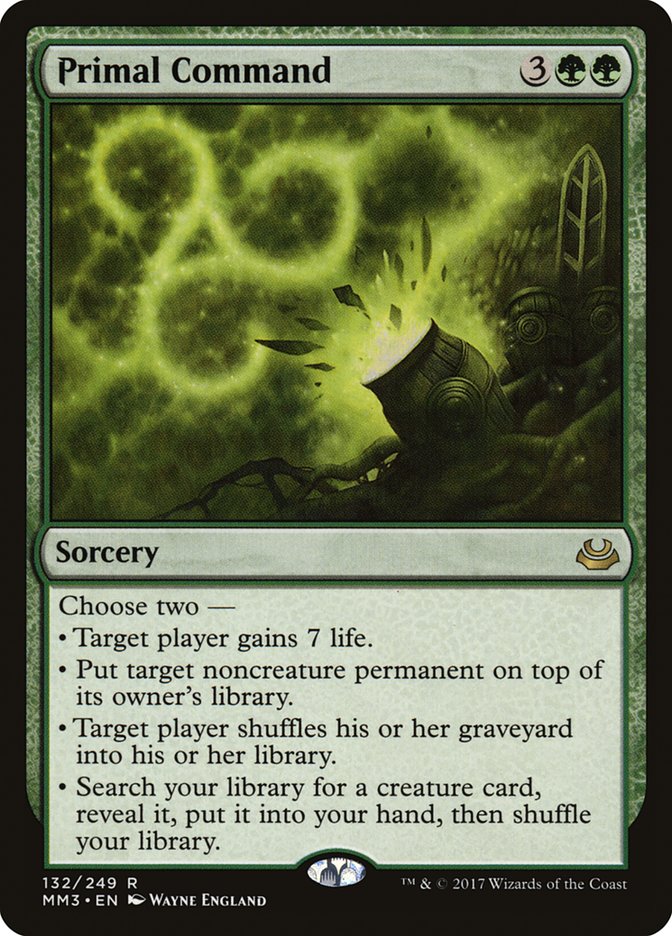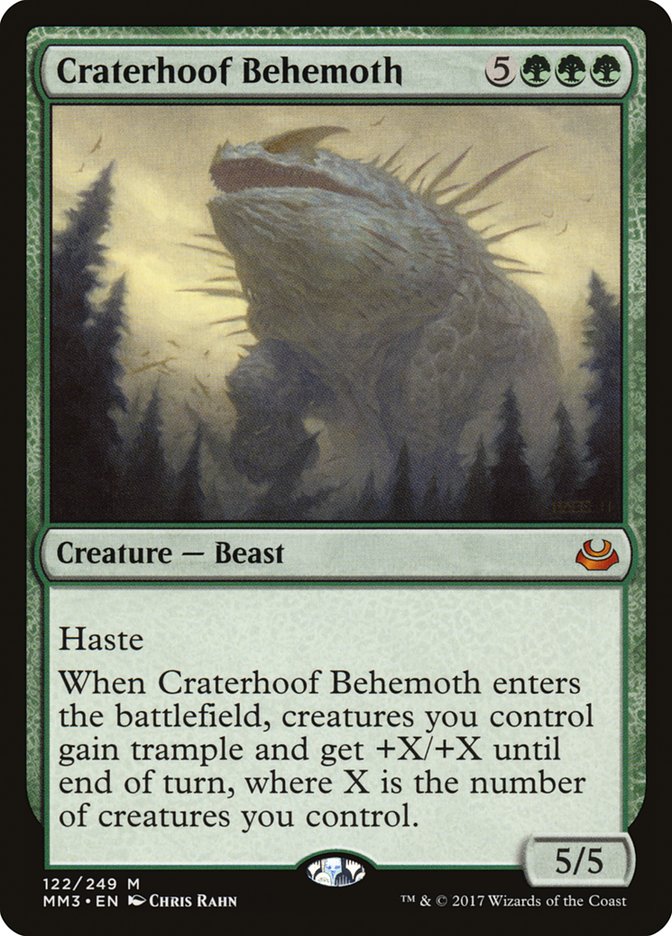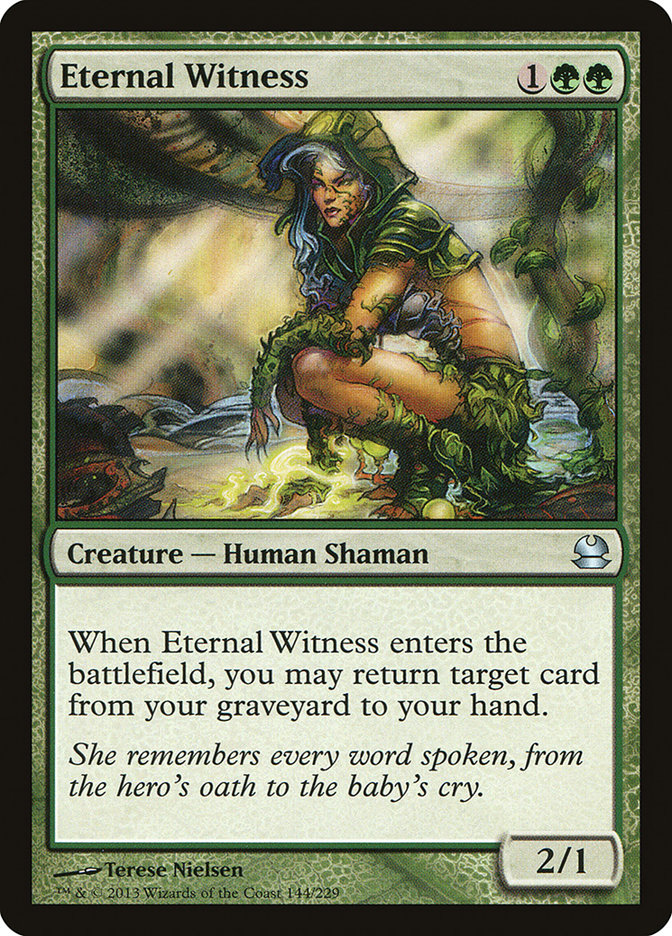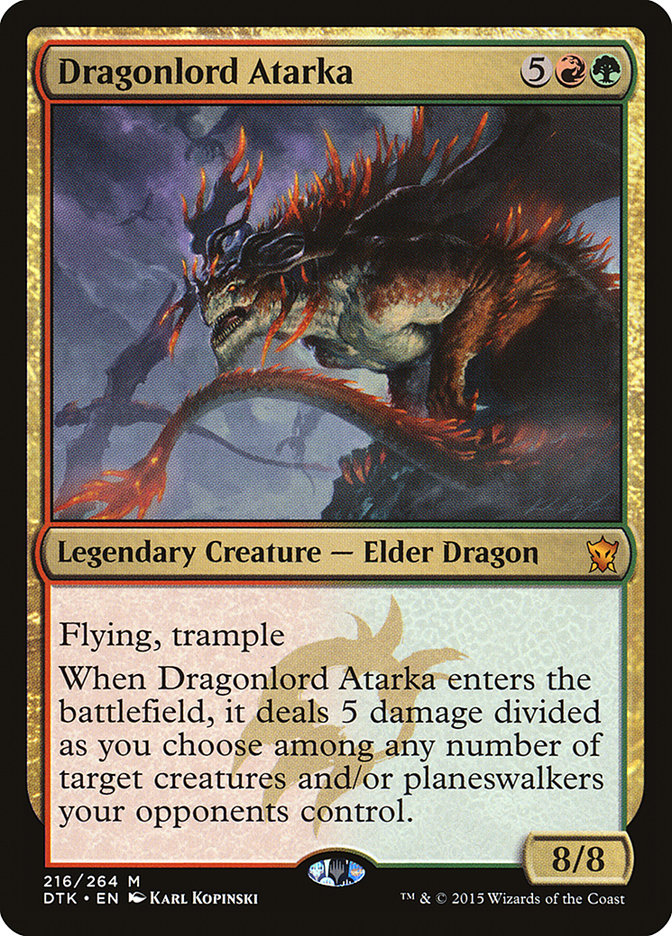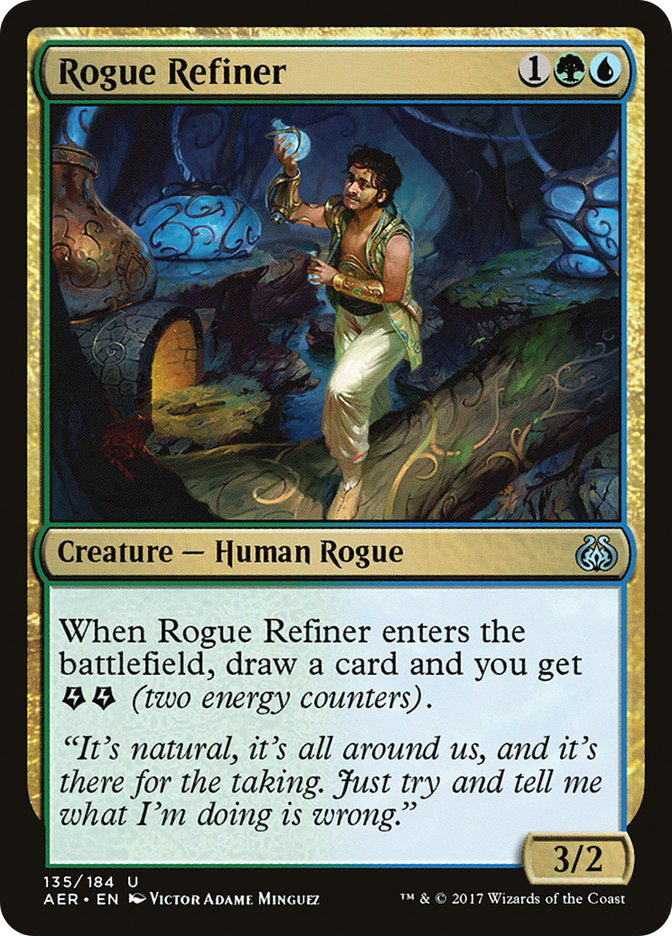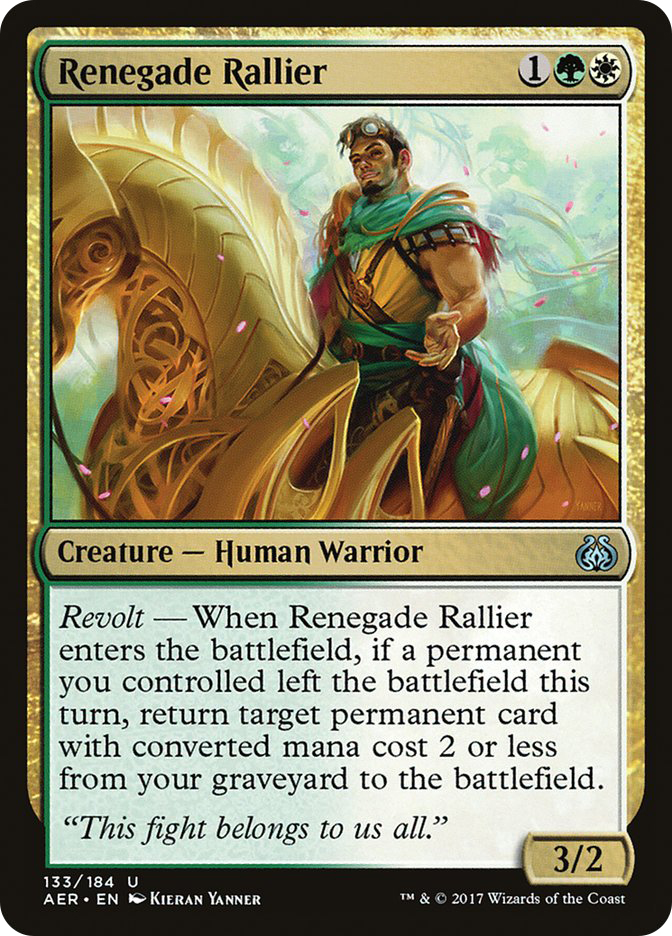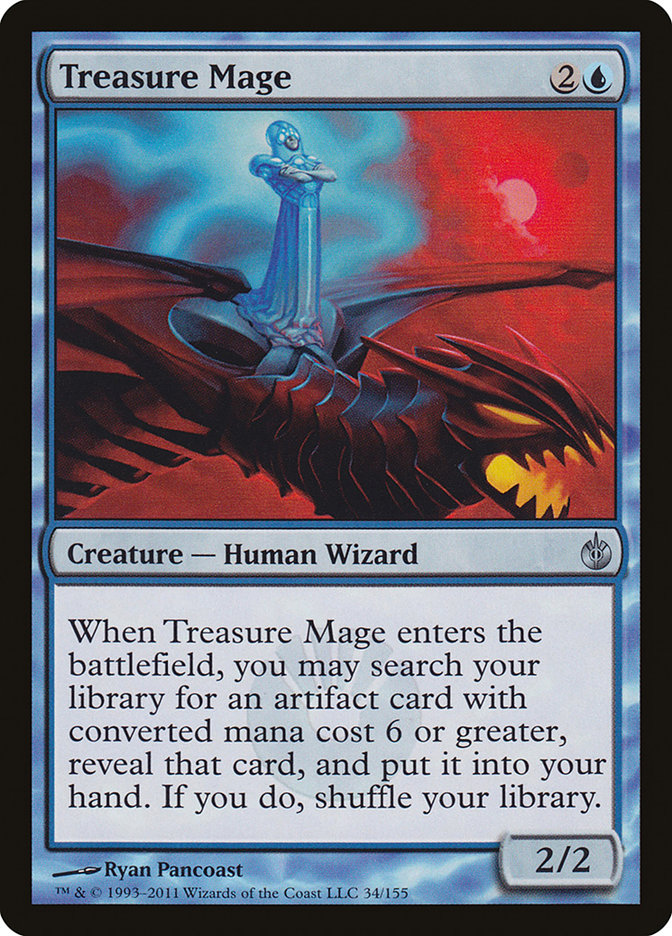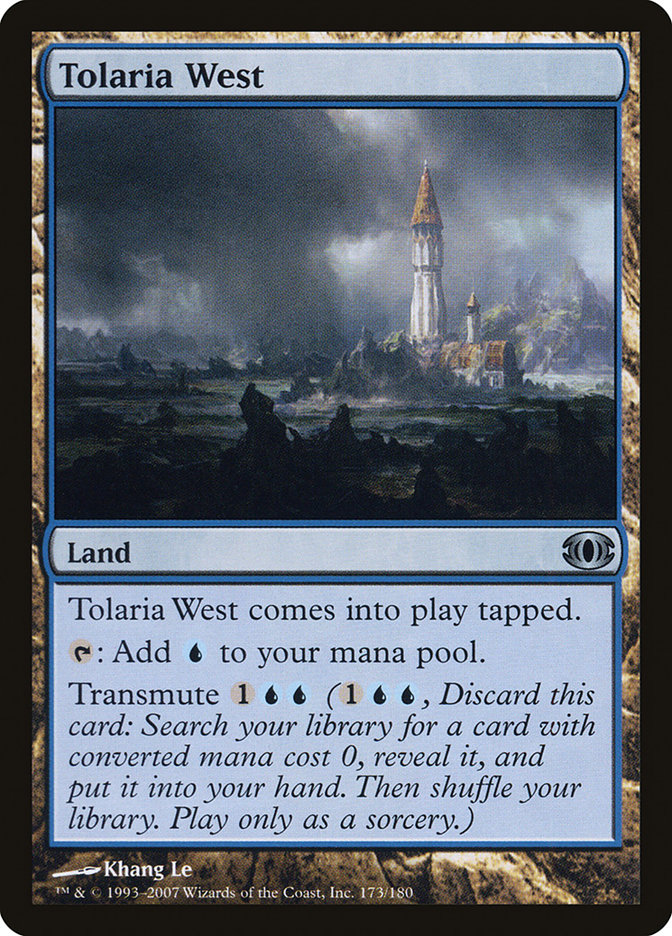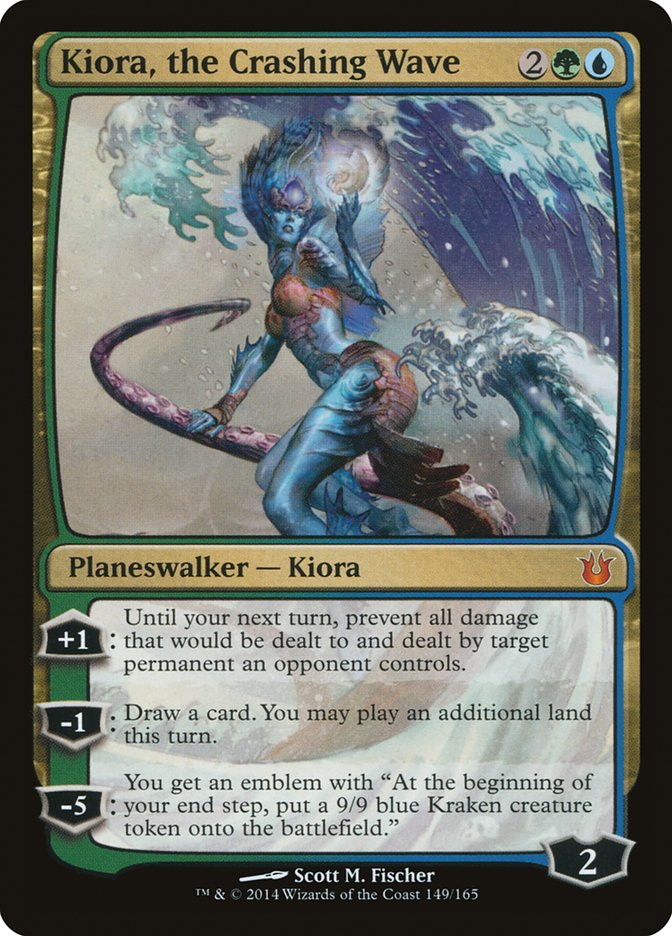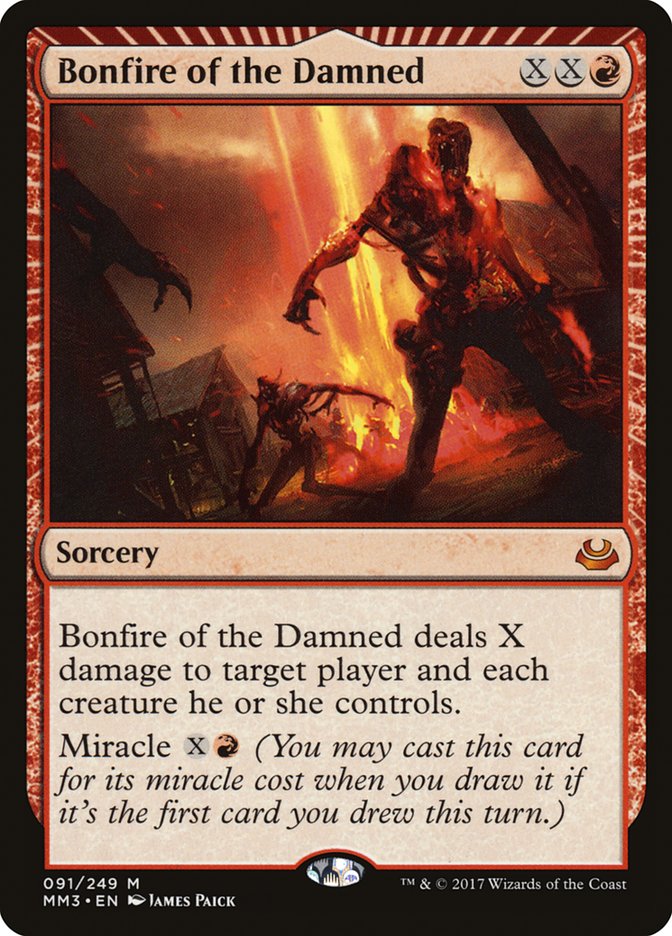While Team Unified might not be the best form of Team Constructed tournaments for GPs in the long term, one thing I personally like about Unified Modern is that it forces me to learn about more Modern decks than I’d normally have to. Playing decks with Thoughtseize has been working great for me, so I’ve just started choosing the best Thoughtseize deck for any given weekend. Now that only a third of our team can play Thoughtseize, I have to try to figure out which other decks I like. Today, I want to go over some of the more unusual decks I’ve considered.
First up is my take on a deck I saw Butakov playing on Magic Online, Company Green Devotion:
Creatures (27)
- 4 Birds of Paradise
- 4 Eternal Witness
- 1 Kitchen Finks
- 4 Knight of the Reliquary
- 4 Arbor Elf
- 1 Craterhoof Behemoth
- 4 Burning-Tree Emissary
- 3 Courser of Kruphix
- 2 Tireless Tracker
Lands (22)
Spells (11)

The goal here is to build up a large battlefield with Collected Company, use Primal Command to find Craterhoof Behemoth, and use Knight of the Reliquary to find Nykthos, Shrine to Nyx to cast it.
The deck has explosive draws and a lot of ability to grind in the late-game. In the maindeck, it can’t really interact outside of Primal Command; the goal is just to race to Craterhoof. After sideboarding you can become a pretty solid land destruction deck against big mana decks, you can add Path to Exile against creature decks, or you can vary your top-end to improve your grinding game.
This has a lot of the strengths of other Collected Company decks, but its over-the-top kill doesn’t use the graveyard, which cuts off hate, and the big mana aspect lets you get a lot more out of your Tireless Trackers and Eternal Witnesses.
In a team event, you probably wouldn’t play a few of every green fetchland, since your teammates with likely want some, but you can get away with any two green fetchlands (and just add a fifth Forest). You can also use Overgrown Tomb instead of Stomping Ground and drop Dragonlord Atarka if that makes it fit better with other decks.
It’s worth noting that there are a ton of sweet lands I’d want to have in my Knight of the Reliquary deck, and this deck has very few of them. That’s the constraint of being a low-land deck that needs green mana and wants to use Nykthos, Shrine to Nyx. You could get a little greedier and only play seventeen green sources to fit something like a Ghost Quarter, or you could potentially play a land over a Utopia Sprawl or cut a Nykthos, but space for lands is really tight, which is the answer to why I don’t have any particular land in the deck. I think these are the best ones, but it’s definitely close, and could easily be worth making room for others.
Another Collected Company deck I’ve wondered about is Saheeli Company:
Creatures (31)
- 4 Birds of Paradise
- 2 Eternal Witness
- 2 Flickerwisp
- 4 Noble Hierarch
- 2 Spellskite
- 1 Restoration Angel
- 2 Voice of Resurgence
- 3 Reflector Mage
- 3 Renegade Rallier
- 4 Rogue Refiner
- 4 Felidar Guardian
Planeswalkers (4)
Lands (21)
Spells (4)

There are a lot of options about which creatures to play and the numbers can be tweaked a lot, but I think this is a reasonable starting point. The goal was obviously to maximize the number of creatures that would be good to blink with Felidar Guardian or copy with Saheeli Rai, which is why Spell Queller, for example, is only in the sideboard. The two-mana creatures make it harder or more costly for your opponent to disrupt your combo, which should make them targets, which helps maximize Renegade Rallier.
Rogue Refiner doesn’t see a lot of Modern play because it’s hard to justify playing energy cards, but even if you can never spend the energy, as in this deck, I don’t think there’s a better three-mana creature that draws a card, which is exactly the kind of guaranteed value I’m looking for. I thought about including one Whirler Virtuoso to use the energy, since there are some decks in Modern that match up badly against 1/1 fliers, but I thought it wasn’t quite worth it without anything else making energy.
One thing that I like about this deck is that, with all the mana creatures and Renegade Rallier, it’s very good at building up to six mana without even revealing that it’s playing the combo (which is much less obvious in Modern, where there are a variety of Collected Company decks, than it is in Standard where playing these colors almost always means playing the combo), allowing you to deploy the full combo all at once when your opponent isn’t ready for it. This also allows for sideboard plans like Elspeth, Sun’s Champion, which goes in an entirely different direction from the rest of the deck and can win games by itself against a variety of decks, making it a great way to take advantage of all the extra mana.
Before I decided to play Jund Death’s Shadow in GP Vancouver, I almost tried Mono-Blue Tron instead, and I wonder both whether that deck is better than people think and whether people are building it properly. When I see lists with Treasure Mage for a few big targets, I wonder if Trinket Mage is better; it can find Expedition Map, Engineered Explosives, or
I think Tolaria West is also not seeing the play it deserves, especially with the option to play Walking Ballista.
Creatures (7)
Planeswalkers (1)
Lands (24)
Spells (28)

This is a tricky deck to build because you really have a lot of options. Gifts Ungiven and Crucible of Worlds can be played to give the deck more reliable access to the Tron in the late-game and a bigger finish, but I don’t think they’re needed. I think this deck can assemble well enough and it plays a solid control game. In some matchups, Walking Ballista will be enough to take over the game, but when that doesn’t work, you still have a lot of other high impact cards you can find.
Resetting your own Walking Ballista with Repeal, especially while dodging a removal spell for just a single mana, is another reason the card is a great fit in this archetype.
Tolaria West is a great card that was a quiet all-star all the way back to my first PT Top 8 in Philadelphia with Blazing Shoal infect and has served me well somewhat more recently in Amulet Bloom. With the banning of Summer Bloom, this deck disappeared, but a few people have found some success with the Sakura-Tribe Scout version of the deck more recently, notably Bobby Fortanely’s sixteenth-place finish at GP Vancouver.
My take on it is a little different:
Creatures (14)
Planeswalkers (1)
Lands (27)
Spells (18)

Tireless Tracker is just too sweet for me to pass up on in a deck that generates a lot of mana and plays multiple lands in a turn. It’s useless in the games where you just have to race, but it’s a cheap threat that can sometimes put you up several cards right away, which can make it very hard for reactive decks to keep up.
Walking Ballista is an experiment; the deck plays Tolaria West anyway, which makes it a natural fit, but it’s somewhat less valuable because Tolaria West can already get Summoner’s Pact, which it almost always wants to do. Still, this keeps Tolaria West live as a big threat if you want to play around Dispel or if your Summoner’s Pacts get Surgical Extractioned, and it also just offers a very different kind of threat that doubles as removal against decks like Affinity.
Kiora, the Crashing Wave is another experimental card, but the theory is that it plays well against decks like Death’s Shadow that rely on a single large threat, and its second ability is a natural fit for a U/G deck that’s trying to play extra lands.
Aside from those tweaks, this deck has a few differences from the old Amulet Bloom decks. The one I’m most excited about is Bonfire of the Damned. When Summer Bloom was legal, the format was very fast, and you needed a quick answer to things like Glistener Elf. Now that the format’s a little slower, Bonfire of the Damned is serviceable as a sweeper, and because the deck doesn’t have the explosive Summer Bloom games anymore, you’re more likely to find yourself playing a longer game where you have more lands on the battlefield, and having the ability to miracle Bonfire for a huge number just adds an entire extra dimension to the deck.
I want to reiterate that none of these are necessarily recommendations for #GPSanAnt, where you can probably have each person simply play the best deck for them. Rather, these are interesting decks I’d consider that I wouldn’t have considered at all if I didn’t have a team event coming up. If you’re playing in #GPSanAnt, I recommend trying to treat it as much like a regular Modern tournament as possible. Try to have everyone on your team playing good decks that they know well, and don’t think too much about how the metagame will be different than a regular Modern tournament, because it will be very similar.


